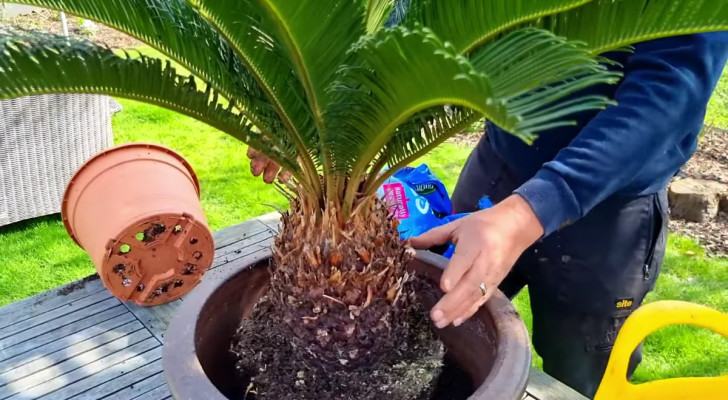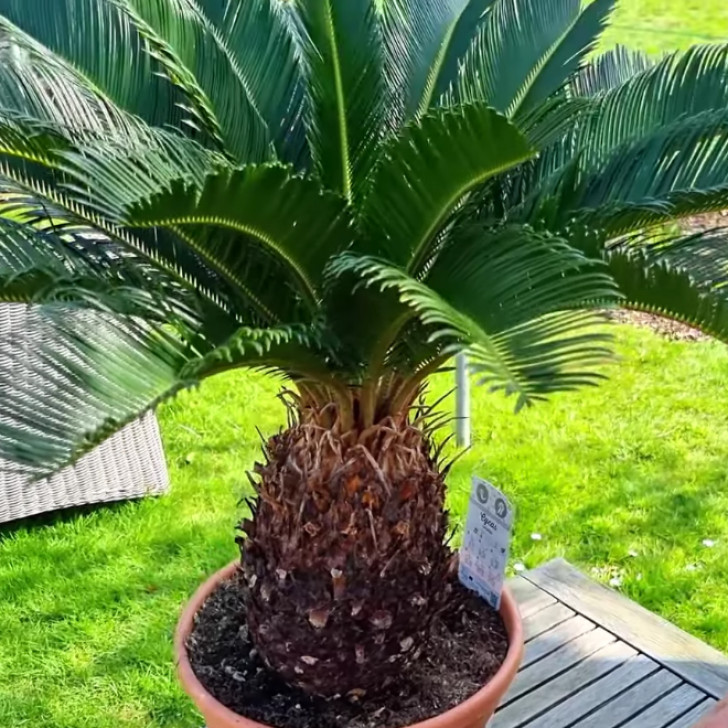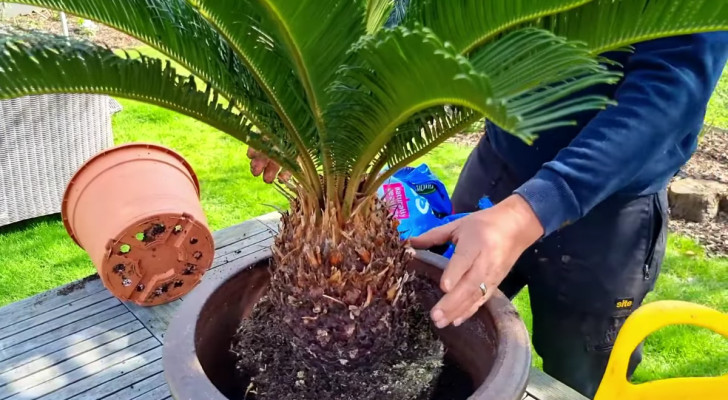A step-by-step guide for repotting a cycad and protecting it from the cold

Cycas revoluta (cycad) is a plant native to the southern subtropical regions of Japan, in particular, the island of Kyushu. Traditionally found in coastal forests and rocky areas, it grows on well-drained soils, rocky slopes and sandy soils. The Cycas genus, to which this plant belongs, is considered to be a "living fossil", since its origins date back about 300 million years.
This evergreen perennial plant has been popular for several centuries as an ornamental plant, highly appreciated for its beauty and its incredibly slow growth. It can grow 1.5 meters high in approximately 20-50 years and this makes it eminently suitable for cultivation in pots.
A robust plant, a cycad can tolerate temperatures close to zero (although it prefers warm and humid climates). It requires constantly moist soil and monthly fertilization during its growing season to thrive.
Despite its slow growth, a cycad also requires repotting, albeit it rarely. Read on to find out how best to care for your cycad:
When to repot a cycad

Walking Talking Gardeners/YouTube
Being a slow-growing plant, a cycad will only require repotting every 2/4 years. You will know when the time for repotting has come when the roots begin to emerge from the base of the existing pot. The ideal time for repotting a cycad is the beginning of the spring (in March), or in autumn (around September).
Make sure the new soil has high draining capabilities: you can ensure this by mixing universal soil with pumice stone or expanded clay. Given the infrequent need for repotting, it is advisable to enrich the soil of your cycad with leonardite (a mixture of fossil organic substance which promotes microbial and root growth). This enriching operation must be carried out twice a year by removing the surface layer soil and laying down the leonardite to top the pot off again.
How to repot a cycad

Walking Talking Gardeners/YouTube
A cycad does not deal well with repotting and therefore, it is necessary to proceed very carefully with this operation:
- Water the plant abundantly - preferably by immersion - so that the soil is softer and easier to remove from the pot (but don't let the soil turn into a liquidy sludge);
- Choose a pot that is at least 4-5 cm larger than the old one and fill the bottom with expanded clay and a thin layer of soil;
- Extract the cycad very delicately from the old pot, placing it down horizontally and rotating it slightly while pulling the stem from its base. Be careful not to pull the plant by the leaves or tops of the leaf stalks, as you could damage it;
- Place the cycad, along with its old clod of soil, into the new pot. Top up with fresh soil;
- Fertilize the cycad to encourage continued growth.
How to protect a cycad from the cold
As already mentioned, a cycad can resist very low temperatures. However, the ideal temperature for it in winter is around 10 degrees C. When intense, prolonged cold is predicted, it is best to protect the plant in order to avoid harm due to freezing.
Bringing the cycad indoors may not be the right choice, since low temperatures are necessary to keep it in its vegetative state (needed for the plant to grow properly in the upcoming season). However, starting from the end of October (or the beginning of November), it will be necessary to protect your cycad from the winter frost, moving it to a sheltered veranda or balcony (or inside an unheated, well-lit landing).
Cycads which cannot be moved, can be covered with special frost-proof sheets or jute/burlap sacks.
Thanks to these tips, your cycad will thrive!